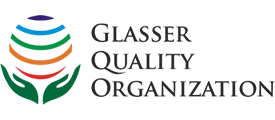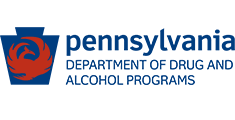The signs, symptoms, and effects of alcohol addiction can be different for every person impacted. Learning about alcohol addiction is one of the first steps towards getting better.
Understanding Alcohol Addiction
Learn about alcohol addiction and substance abuse
Alcohol, a liquid formed by fermenting sugar, yeast, and starches, is one of the most widely-consumed drugs on earth. Most commonly found in wine, liquor, and beer, alcohol acts as a central nervous system depressant. Early in a period of drinking, alcohol can induce feelings of well being and elevated mood, but these positive, energetic feelings soon can give way to drowsiness, disrupted cognitive abilities, and social withdrawal. While many people are able to drink in moderation, many others struggle to manage their alcohol use. Alcohol abuse can result in a subsequent alcohol use disorder, which is a life-threatening chronic condition that often requires specialized intervention from a substance use treatment center in order to overcome.
Statistics
Alcohol addiction statistics
Alcohol use disorders (AUDs) are quite common, with 8.5 percent of people meeting criteria for an AUD in a given year, according to the fifth edition of the Diagnostic and Statistical Manual of Mental Disorders (DSM). AUDs are present in 16 percent of adults ages 18 to 29. In addition, one estimate from the DSM suggests that 20 percent of intensive care unit admissions are related to alcohol use. The National Institute on Alcohol Abuse and Alcoholism (NIAAA) reported that 1.3 million adults received treatment for alcohol abuse at a substance use treatment center in 2013. Alcohol abuse can also be fatal: nearly 88,000 people die as a result of alcohol every year, making alcohol abuse and AUDs the third leading cause of preventable death among Americans.
Causes and Risk Factors
Causes and risk factors for alcohol addiction
AUDs are similar to other substance use disorders in that they arise out of a complex mix of risk factors including both genetic and environmental influences. These risk factors include the following:
Genetic: Familial alcohol abuse is a strong predictor of an individual’s risk of alcohol abuse. Alcohol abuse is three to four times more common among individuals with multiple AUD-affected relatives, close genetic ties to relatives with an AUD, and greater AUD severity in those affected family members. This elevated risk of AUD persists even in individuals who were born to high-risk parents but were later adopted into an AUD-free family. Certain genetic variations that affect a person’s response to alcohol and that person’s reward pathways in the brain can also affect his or her risk of developing an AUD.
Environmental: In concert with genetic factors, a person’s environment and culture can affect his or her risk of AUD. Factors such as ready availability of alcohol, personal experiences with alcohol, stress level, peer attitudes about alcohol, exaggerated positive expectations about alcohol use, and limited ability to cope with stress can all affect a person’s AUD risk.
Risk Factors:
- Presence of mental health disorder, especially schizophrenia or bipolar disorder
- Personal history of other substance use disorders
- Close genetic relationships to family members with AUDs
- Family history of AUD
- Ease of access to alcohol
- Associating with peers who use alcohol heavily
- Elevated stress levels
- Limited coping ability
- Men are more likely than women to have an AUD
Signs and Symptoms
Signs and symptoms of alcohol addiction
While each person with an AUD will present with slightly different signs and symptoms, the following may indicate that a person is struggling with an AUD:
Behavioral symptoms:
- Drinking more or drinking over a longer period of time than a person originally intends to
- Having a persistent desire to reduce alcohol use, but being unable to follow through
- Spending a great deal of time obtaining alcohol, drinking, or recovering from alcohol use
- Falling behind on major obligations as a result of alcohol use
- Continuing to abuse alcohol despite suffering negative consequences of use
- Drinking even when doing so may be physically hazardous, such as when one is driving or at work
- Continuing to drink despite knowing of psychological or physical problems in one’s life that are caused or worsened by alcohol use
- Slurred speech
Physical symptoms:
- Tolerance, or needing more alcohol in order to feel intoxicated
- Withdrawal, or a series of unpleasant symptoms that occur when a person abstains from drinking
- Loss of coordination
- Difficulty walking
- Involuntary eye movements or difficulty focusing on certain objects
- Drowsiness or sleepiness
Cognitive symptoms:
- Having cravings to drink
- Impaired memory
- Difficulty maintaining attention
- Poor judgment
Psychosocial symptoms:
- Experiencing significant interpersonal problems as a result of drinking
- Choosing to drink instead of keeping up with important social or recreational activities
- Gregariousness
- Emotional fluctuations
Effects
Effects of alcohol addiction
If left untreated, an AUD can have wide-reaching, disastrous, and even fatal consequences. Some of these effects may include:
- Impaired performance at work
- Loss of job or demotion
- Financial difficulties
- Homelessness
- Being the victim of violence
- Committing criminal acts
- Legal involvement or incarceration
- Social withdrawal
- Depressed mood
- Relational strain
- Onset or worsening of mental health symptoms
- Polysubstance use, addiction, or chemical dependency
- Organ damage
- Permanent memory impairment
- Coma
- Death, either from suicide or overdose
Co-Occurring Disorders
Alcohol addiction and co-occurring disorders
AUDs often exist in conjunction with other co-occurring mental health disorders. Some of these disorders can include:
- Bipolar disorder
- Schizophrenia
- Antisocial personality disorder
- Other substance use disorders
- Depressive disorders
- Anxiety disorders
Withdrawal and Overdose
Effects of alcohol withdrawal and overdose
Effects of alcohol withdrawal: After an extended period of alcohol abuse, a person’s body may have difficulty coping with the absence of alcohol if that person abstains from drinking. Known as withdrawal, this syndrome can be dangerous and even life-threatening. Alcohol withdrawal is safest when the individual is supervised by a team of substance use treatment professionals. Signs and symptoms of alcohol withdrawal can include the following:
- Sweating
- Rapid heart rate
- Tremors or shaking
- Trouble sleeping
- Nausea or vomiting
- Anxiety
- Seizures
- Short term hallucinations involving one’s sense of sight, touch, or hearing
- Feeling restless or jittery
- Delirium, or extreme disorientation, confusion, and emotional changes
Effects of alcohol overdose: As with most other substances, it is possible for a person to overdose on alcohol. If a person who has been drinking presents with any of the following signs and symptoms, he or she should receive medical attention as soon as possible:
- Confusion
- Vomiting
- Slow or irregular breathing
- Blue-colored skin
- Decrease in body temperature
- Unconsciousness
- Seizures












